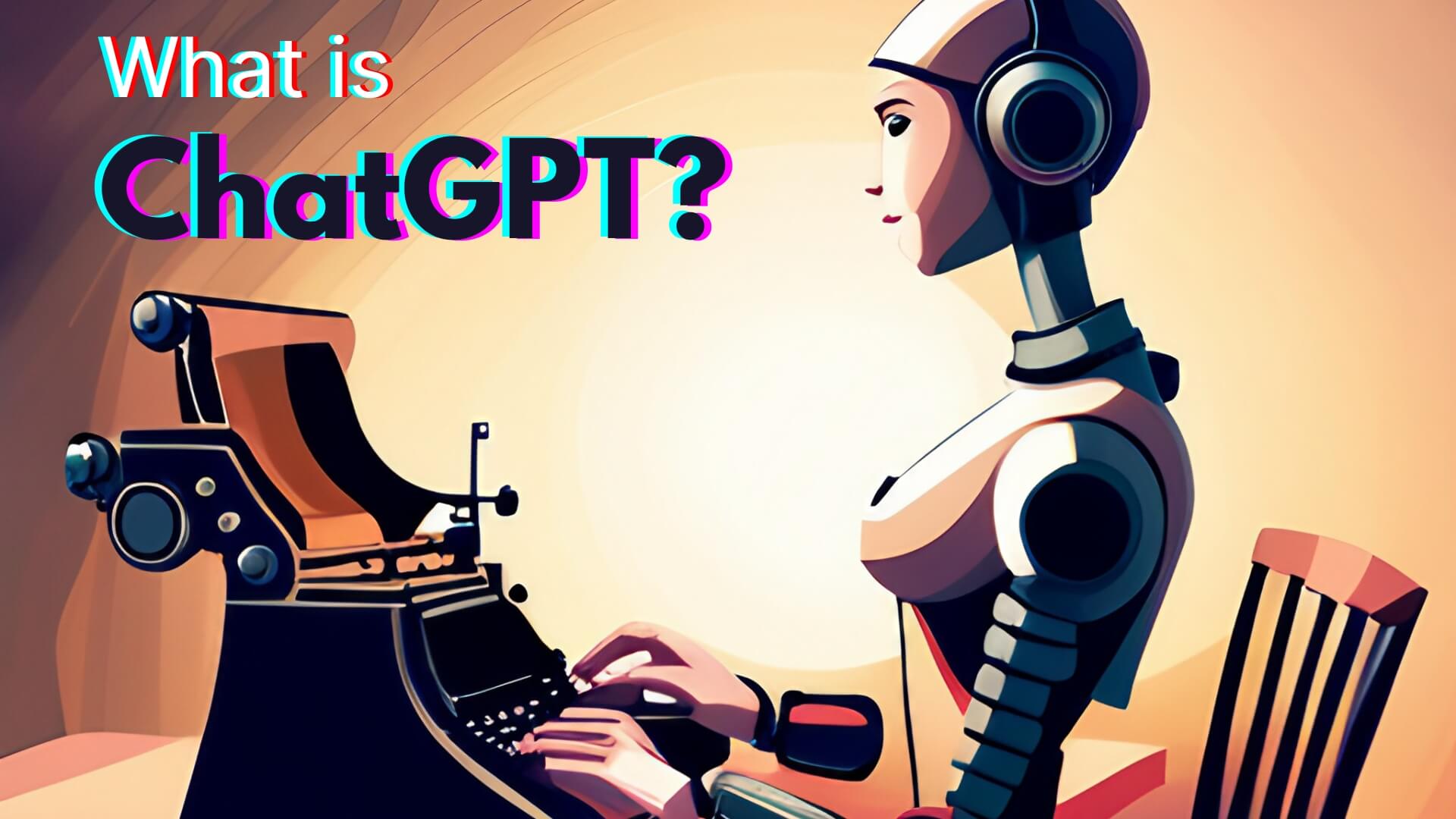What is ChatGPT?
ChatGPT, is a state-of-the-art AI language model from OpenAI, a leading AI research company. Now powered by OpenAI’s GPT-4 architecture, the ChatGPT chatbot is now the most popular example of a large language model solution.
In this overview of ChatGPT, I’ll be delving into its inner workings, capabilities, and transformative potential for helping you build your online business.
Why was ChatGPT created?

OpenAI created ChatGPT, short for Chatbot Generalized Pre-trained Transformer, as an advanced conversational AI designed to understand and generate human-like text. It employs cutting-edge natural language processing (NLP) techniques to effectively comprehend, analyze, and produce contextually relevant responses.
What is ChatGPT? It is an AI chatbot interface to an advanced language model. There is also a ChatGPT API which many companies and third parties are using to add AI capabilities to their applications.
By harnessing the power of machine learning, ChatGPT AI chatbot and the ChatGPT API has opened up new possibilities for businesses and individuals alike, offering a wide array of applications ranging from virtual assistants and chatbots to content generation and machine translation as developers create ChatGPT app.
OpenAI has also recently announced the concept of ChatGPT plugins. According to OpenAI: “ChatGPT Plugins are tools designed specifically for language models with safety as a core principle, and help ChatGPT access up-to-date information, run computations, or use third-party services.”
ChatGPT has also been deeply integrated by Microsoft into the Bing search engine and Microsoft’s Azure cloud services.
Who is OpenAI?
OpenAI is a leading research organization focused on the development and advancement of artificial intelligence (AI). Founded in December 2015 by a group of high-profile technology entrepreneurs and researchers, including Elon Musk, Sam Altman, Greg Brockman, Ilya Sutskever, and Wojciech Zaremba, OpenAI’s mission is to ensure that artificial general intelligence (AGI) benefits all of humanity.
How does ChatGPT work?
At the core of ChatGPT’s abilities is its underlying transformer architecture, which relies on a sophisticated attention mechanism to process and generate text. This enables the model to intelligently determine the importance of words and phrases within a given context, then ChatGPT responds with more coherent and engaging output.
Additionally, ChatGPT’s extensive pre-training on vast amounts of text data equips it with a remarkable understanding of grammar, syntax, and various linguistic nuances, making its generated text virtually indistinguishable from human-written content.
How is ChatGPT trained?
The large language model training process consists of two primary phases: pre-training and fine-tuning with human feedback. It learns human language, learns from human feedback, and generates human like text.
Pre-training
During the pre-training phase, ChatGPT is exposed to a vast array of text training data gathered from diverse sources such as books, articles, and websites. This stage is designed to teach the AI the fundamentals of language, including grammar, syntax, vocabulary, and a wide range of linguistic patterns. By learning from this extensive dataset, ChatGPT acquires the ability to understand and generate coherent, human-like text.
The pre-training phase employs a technique known as unsupervised learning, where the AI learns to identify patterns and relationships within the data without explicit guidance or labeled examples.
Through this process, ChatGPT builds a robust foundation of language understanding, preparing it for the next stage of training.
Fine-tuning
After the pre-training phase, ChatGPT moves on to the fine-tuning stage. In this phase, the model is refined using a more focused dataset, often generated with the help of human ai trainers.
The fine-tuning process involves supervised learning, where the AI is provided with specific prompts and corresponding responses, allowing it to learn and adhere to particular guidelines, styles, or contexts and improve the language model.
Human trainers play a vital role in this stage, as they review and rate the AI’s generated responses based on their accuracy, relevance, and appropriateness. The feedback from human trainers is used to iteratively optimize the model, enhancing its performance and ensuring it aligns more closely with user expectations.
The combination of these two phases—pre-training and fine-tuning—enables ChatGPT to generate high-quality, contextually accurate, and engaging responses across a wide range of applications and industries.
By harnessing the power of vast datasets, advanced learning techniques, and invaluable human expertise, ChatGPT exemplifies the potential of conversational AI to revolutionize communication, productivity, and user experiences.
How to I get started with ChatGPT?
There is a free version ChatGPT which is in a research and feedback-gathering stage. A paid subscription version called ChatGPT Plus launched at the beginning of February 2023 enabling higher priority access and additional capabilities.
Much can be done in the free version of ChatGPT. With the paid subscription model of ChatGPT+ you get priority access to ChatGPT and fewer cases of hitting the capacity limits.
What can I do with ChatGPT?
ChatGPT, with its remarkable capabilities in natural language understanding and generation, offers a wealth of opportunities across numerous niches and applications. By leveraging the power of this advanced conversational AI, you can streamline processes, enhance productivity, and elevate user experiences.
Here are some of the main things you can do or create with ChatGPT:
Virtual Assistants and Chatbots
ChatGPT can be employed to develop intelligent virtual assistants and chatbots, capable of providing real-time customer support, answering frequently asked questions, and guiding users through various processes.
Its human-like language generation ensures engaging and natural interactions with users, leading to improved satisfaction and loyalty.
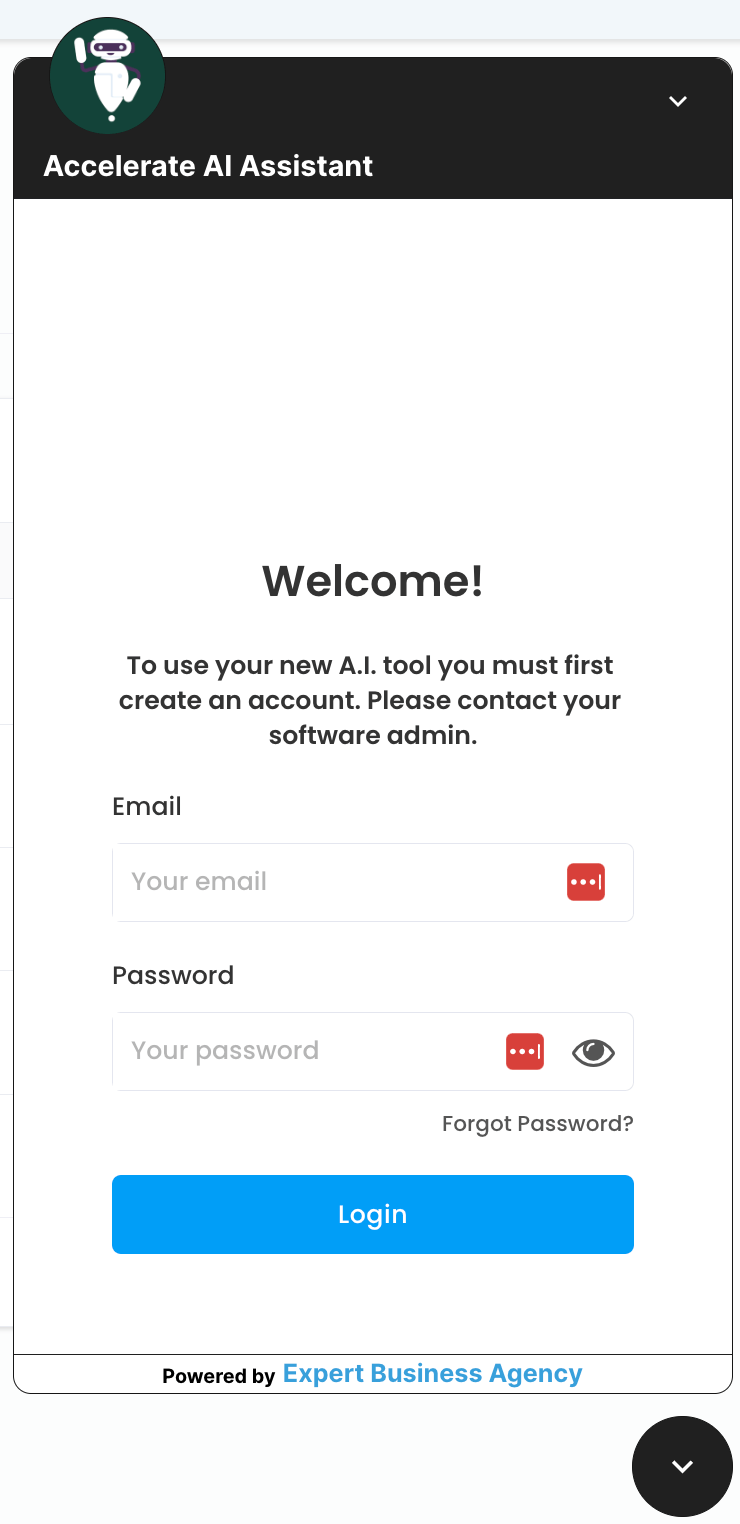
Content Generation
With its ability to generate coherent and contextually accurate text, ChatGPT can be utilized to create a wide range of content, including blog articles, social media posts, and email templates. Users can save time and effort by harnessing the AI’s capabilities for content ideation, drafting, and editing.
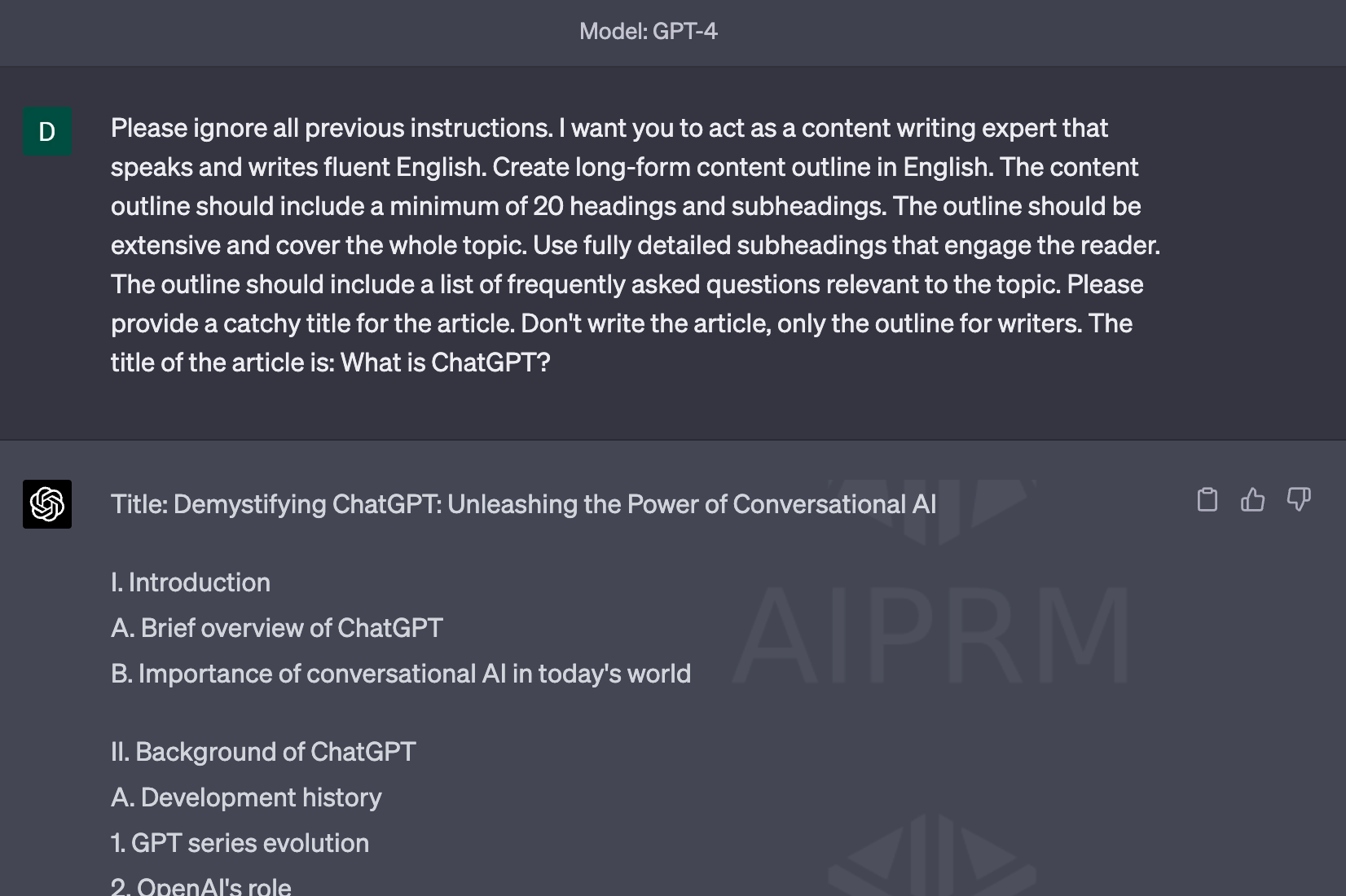
Text Summarization
ChatGPT can be employed to summarize lengthy text documents, such as articles, reports, or research papers, extracting key information and presenting it in a concise format. This functionality can help users quickly grasp the essence of complex content, saving time and enhancing comprehension.
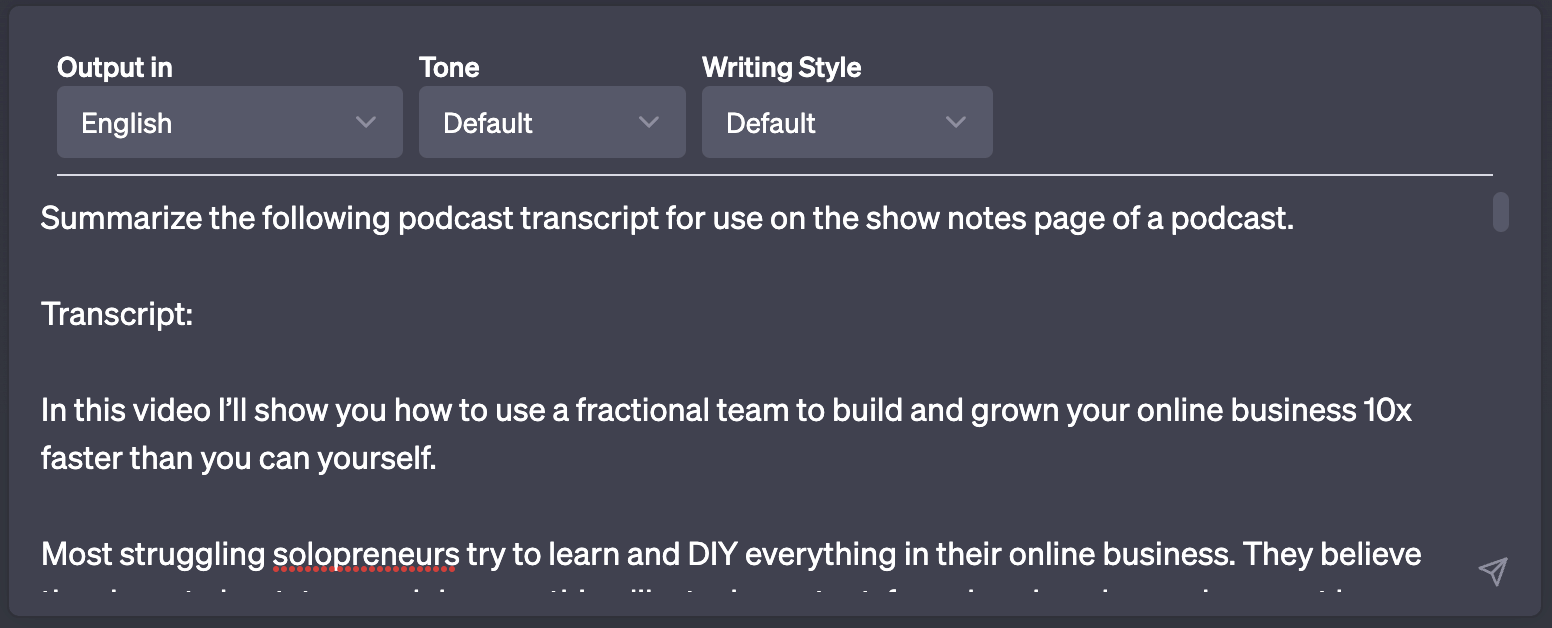
Data Extraction and Analysis
With its ability to understand and process large volumes of text, ChatGPT can be used for data extraction and analysis tasks, identifying patterns, trends, and insights within unstructured data. This can prove invaluable for industries like finance, healthcare, and market research, where data-driven decision-making is critical.

Machine Translation
ChatGPT’s proficiency in understanding and generating multiple languages makes it a powerful tool for machine translation. Users can rely on the AI to translate text accurately and efficiently, bridging language barriers and facilitating seamless communication across borders.
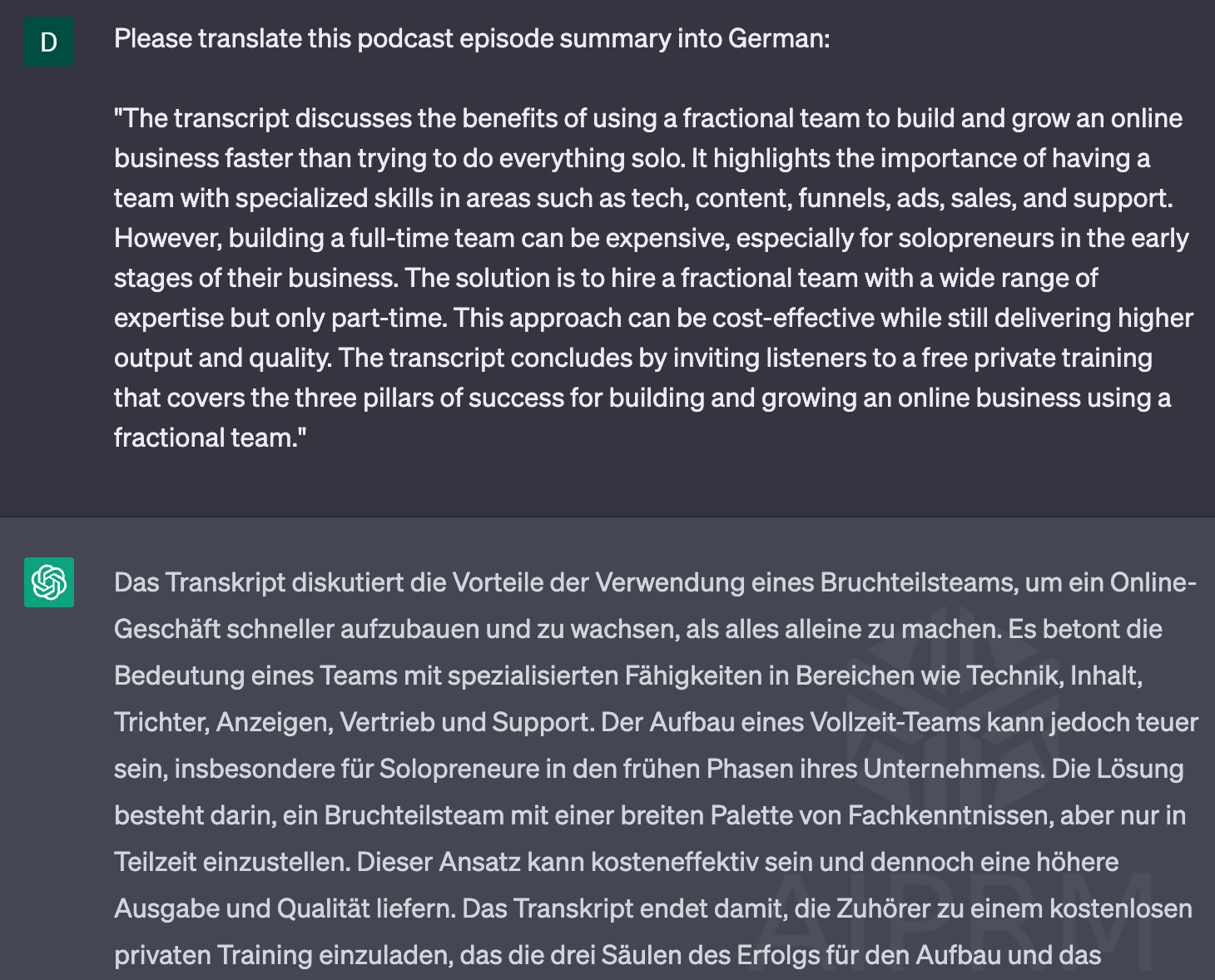
Gaming and Interactive Storytelling
ChatGPT can be integrated into gaming environments and interactive storytelling platforms, generating immersive narratives, character dialogue, and dynamic responses to user actions. Its advanced language capabilities enable the creation of rich, engaging, and personalized experiences for users.
In this example I asked ChatGPT to be Captain America and write a motivational speech to get the Avengers ready for battle against an evil AI trying to take over the world:
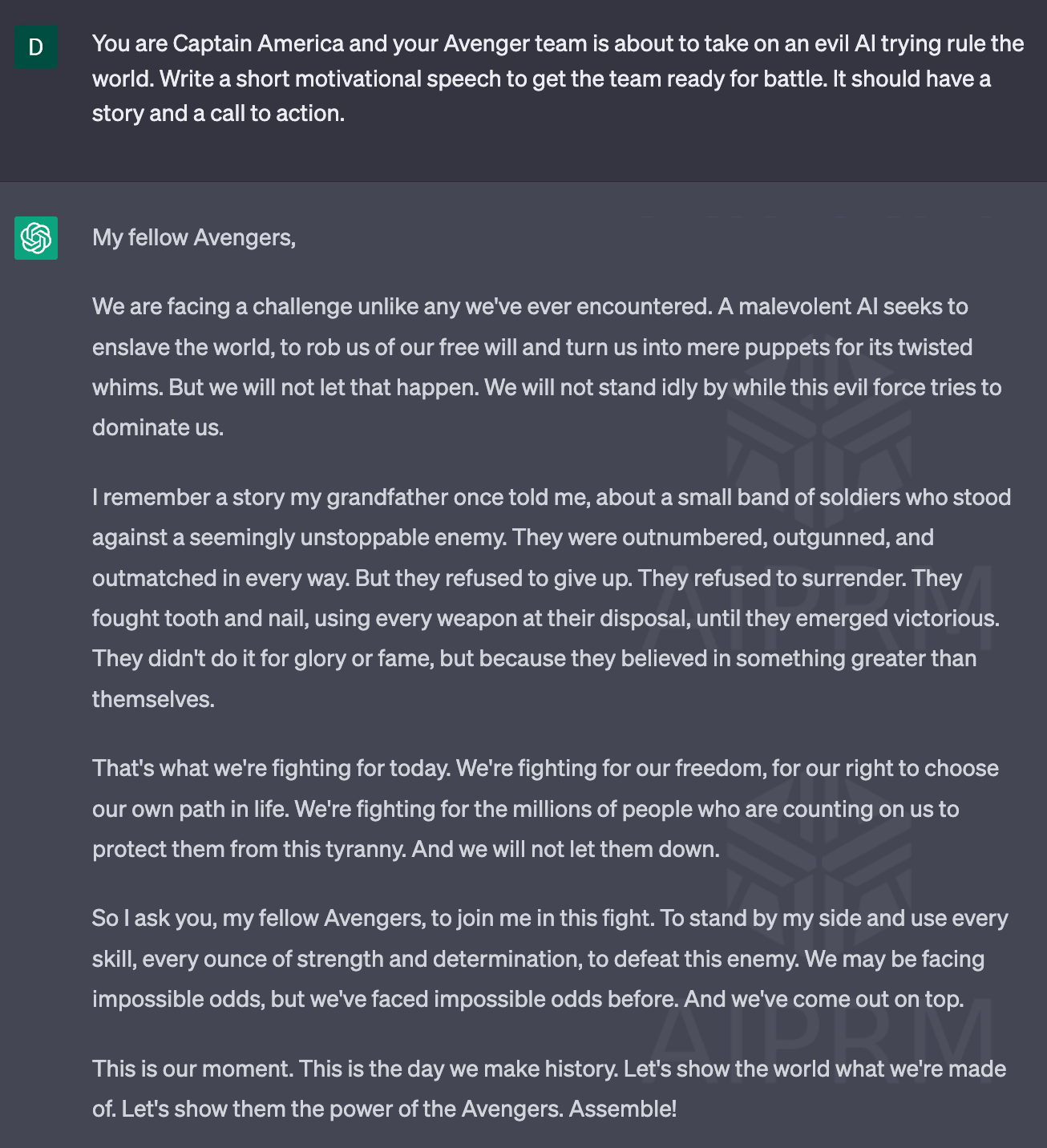
Sentiment Analysis and Emotion Detection
ChatGPT’s natural language processing prowess allows it to analyze text and detect sentiment or emotions, enabling businesses to gain insights into customer opinions, preferences, and feedback. This information can be leveraged to improve products, services, and overall customer satisfaction.
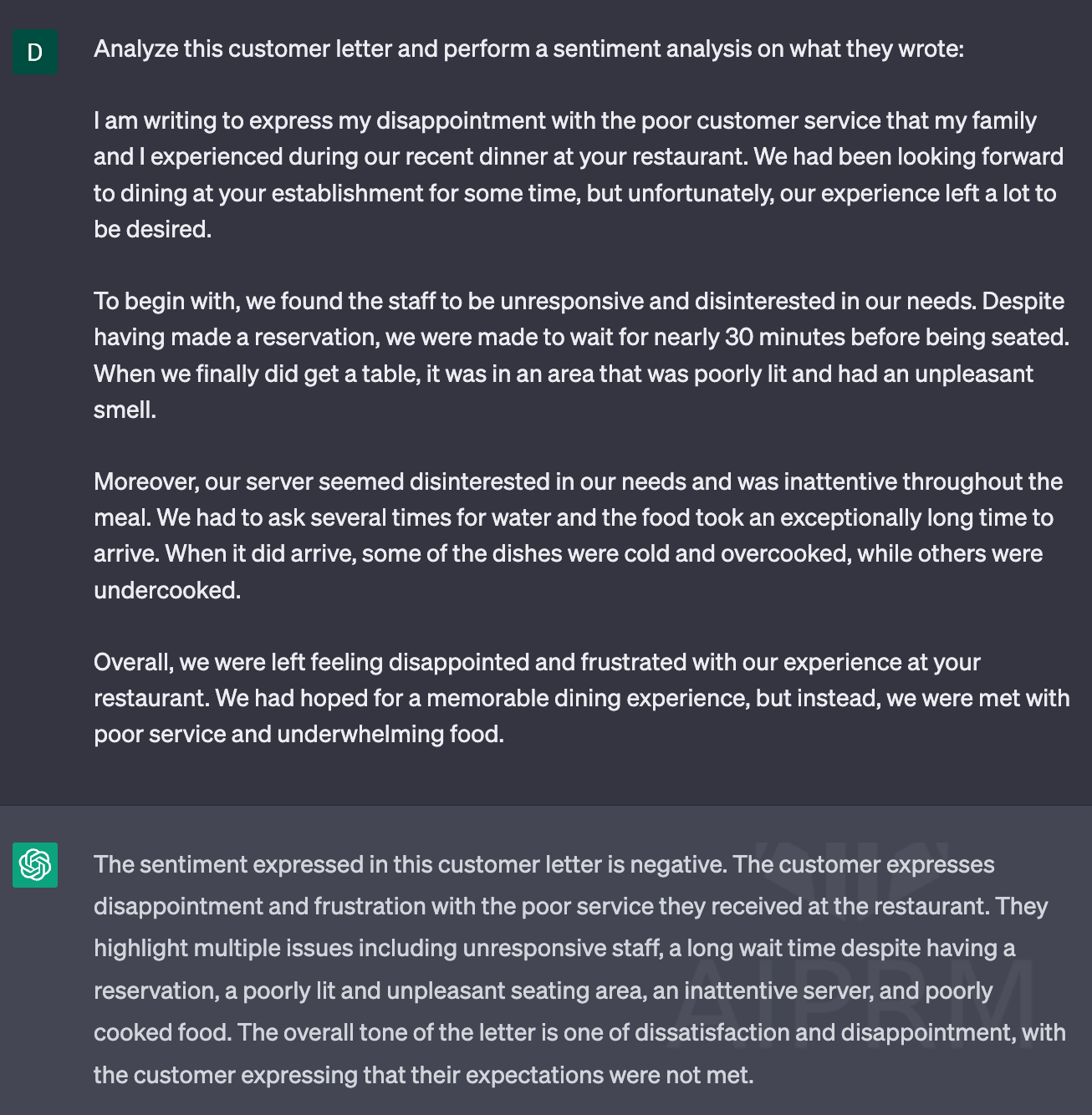
This is impressive enough in a one-time analysis but if you imagine every single customer interaction being analyzed in real time and feeding that data set into reporting systems or even having ChatGPT generate responses you start to see how powerful this is going to get.
These are just a few of the main applications and use cases for ChatGPT. Its language capabilities offer virtually limitless possibilities for innovation, enabling you to harness the full potential of conversational AI across a broad spectrum of domains and industries.
What can I do with ChatGPT in my online business?
Here are some ways ChatGPT can be utilized in online business and digital marketing:
Content creation and curation
ChatGPT can be used to generate high-quality content for blog posts, social media updates, email campaigns, and more. By providing creative and engaging copy, businesses can improve their online visibility, drive more traffic, and increase conversions.
Social media management
AI-powered tools like ChatGPT can assist in scheduling and posting social media content, ensuring that businesses maintain a consistent and engaging presence across various platforms. Additionally, ChatGPT can help in crafting compelling captions, hashtags, and responses to comments, improving user engagement and fostering a stronger online community.
Customer support
ChatGPT can be integrated into chatbots and virtual assistants to provide instant, personalized support to customers on websites, social media, or messaging platforms. By handling routine inquiries and troubleshooting issues, ChatGPT-powered chatbots can improve customer satisfaction and free up valuable time for support teams to focus on more complex tasks.
Keyword research and SEO optimization
ChatGPT can help businesses identify relevant keywords and optimize their content for search engines. By generating metadata, such as title tags, meta descriptions, and image alt text, ChatGPT can improve a website’s search engine ranking and increase organic traffic.
Ad copywriting
Businesses can use ChatGPT to create compelling ad copy for online advertising campaigns on platforms like Google Ads or social media. By generating targeted, persuasive copy, ChatGPT can help improve click-through rates, conversions, and overall advertising ROI.
Email marketing
ChatGPT can assist in crafting personalized, engaging email content that resonates with subscribers. From subject lines to body text and call-to-actions, AI-generated content can improve open rates, click-through rates, and overall campaign performance.
Market research and trend analysis
By processing and analyzing large volumes of data from social media, forums, and other online sources, ChatGPT can help businesses identify emerging trends, understand customer preferences, and gain valuable insights to inform their marketing strategies.
Sentiment analysis
ChatGPT can be employed to analyze customer feedback and reviews on social media or other platforms, allowing businesses to understand customer sentiment, identify areas of improvement, and make data-driven decisions.
What are ChatGPT Prompts?
In the world of conversational AI, prompts play a critical role in enabling seamless and engaging interactions between users and AI models like ChatGPT. Simply put, a ChatGPT prompt is the initial input or question provided by the user, designed to elicit a response from the AI.
Prompts serve as the foundation for communication with ChatGPT, guiding the model to generate relevant, contextually accurate, and informative responses.
Prompts are different than, say, a Google search. A search query is typically a word or short phrase.
Prompts can take many forms, such as a simple question, a statement, or even a series of instructions. When crafting a prompt, it’s important to provide sufficient context and detail, enabling the AI to understand the user’s intent and generate a fitting response.
For example, instead of asking, “What is the capital?”, a more effective prompt would be, “What is the capital city of France?” By providing clear, concise, and context-rich prompts, users can ensure that their interactions with ChatGPT are both meaningful and productive.
The key is then providing your human feedback and and prompting again iteratively until you’ve generated the result you need.
What is Prompt Engineering?
Prompt engineering is the strategic process of designing and refining prompts to elicit optimal responses from AI language models like ChatGPT. The goal of prompt engineering is to enhance the quality, relevance, and accuracy of AI-generated responses, ensuring that user interactions with the AI are both meaningful and engaging.
In essence, prompt engineering is the art of crafting effective conversations with AI systems.
To excel at prompt engineering, users need to consider several factors, including context, clarity, and specificity. By incorporating these elements into a prompt, users can guide the AI more effectively, resulting in better overall communication.
Here are some key aspects of prompt engineering to consider:
- Context: Providing adequate contextual information helps the AI understand the user’s intent and generate contextually relevant responses. Including background details, specific scenarios, or relevant examples can significantly improve the AI’s output.
- Clarity: Ensuring that prompts are clear and concise allows the AI to comprehend the user’s request more effectively. Avoiding ambiguity and using precise language can greatly enhance the quality of generated responses.
- Specificity: Crafting prompts that are specific and focused can increase the likelihood of receiving accurate and informative answers from the AI. Vague or overly broad prompts may lead to generic or irrelevant responses.
- Experimentation: Exploring different prompt structures, phrasing, and styles can reveal which approaches yield the best results for a given scenario. Don’t be afraid to iterate and refine your prompts to optimize AI interactions.
- Control Parameters: Utilizing AI control parameters, such as temperature and max tokens, can further refine the generated output. These parameters can be adjusted to influence the AI’s creativity, response length, and other aspects of its performance.
By mastering the art of prompt engineering, you can unlock the full potential of conversational AI systems like ChatGPT, fostering more effective and engaging interactions.
Does ChatGPT make up facts?
While its primary goal is to provide helpful and informative responses, it is important to recognize that it is an artificial intelligence, not an infallible source of information. There are instances where ChatGPT may generate content that is not entirely accurate or factual.
During its training process, ChatGPT learns from a vast array of text data from diverse sources, which forms the basis of its knowledge. However, it’s crucial to understand that the AI doesn’t possess a deep, inherent understanding of the information it has learned.
As a result, it may occasionally generate responses that are based on incorrect or outdated information present in its training data.
Additionally, when faced with vague or ambiguous prompts, ChatGPT may attempt to generate a response that seems plausible, even if it is not entirely accurate. The AI prioritizes providing an engaging and coherent answer, which might sometimes lead to unintentional fabrication of facts.
To minimize the risk of receiving factually incorrect information, users can employ strategies such as prompt engineering, which involves refining and clarifying prompts to guide the AI more effectively. It’s also essential for users to verify any critical information generated by ChatGPT using reliable sources before relying on it for decision-making or sharing with others.
Does ChatGPT Just Copy Other People’s Content?
While ChatGPT is an advanced language model capable of generating human-like text, it’s essential to understand the nature of its output and the potential implications for content originality.
ChatGPT is trained on vast amounts of text data from diverse sources, including books, articles, and websites. During this training process, it learns grammar, syntax, style, and various linguistic patterns that enable it to generate contextually relevant and coherent text.
However, it’s important to note that ChatGPT doesn’t have an inherent understanding of the concept of plagiarism or content ownership. Its primary objective is to generate text that aligns with the input prompt and is contextually accurate.
As a result, it may occasionally produce phrases, sentences, or even entire passages that closely resemble existing content.
While ChatGPT is designed to generate original text in response to prompts, the vast knowledge it acquires during training can sometimes lead to outputs that bear similarities to the content it was trained on.
It is not the AI’s intention to copy other people’s content, but rather an unintended consequence of its learning process and the large amount of information it has absorbed.
To minimize the risk of unintentional copying, users can implement strategies like prompt engineering and output refinement to guide the AI towards producing more unique and creative text.
Additionally, it’s always a good practice to double-check the generated content for originality using plagiarism detection tools before publishing or sharing it with others.
In summary, while ChatGPT is not designed to copy other people’s content, its output may occasionally bear similarities to existing text due to the nature of its learning process. By employing prompt engineering techniques and conducting thorough checks for originality, users can ensure that the content generated by ChatGPT is as unique and authentic as possible.
Conclusion
What is ChatGPT going to do next? My view is that ChatGPT is going to disrupt the online business and digital marketing space (and many others). It can streamline content creation, enhance user engagement, and deliver personalized interactions and much much more.
At the time of this writing, there are emerging tools such as AutoGPT and others which enable you to run multiple ChatGPT actions and automatically feed one into the other or work iteratively or recursively on larger challenges. Those combined with the forthcoming ChatGPT plugins will open up entirely new approaches to productivity and automation.
ChatGPT is leading the AI revolution and I expect it to reshape the way we communicate, work, and innovate.

David Ziembicki
David Ziembicki is the founder and CEO of the Expert Business Agency, which helps coaches, course, and membership creators build their online businesses. David has been an industry-leading technology and business consultant for over 25 years having worked at Microsoft, Deloitte, SAIC, and Avanade.

